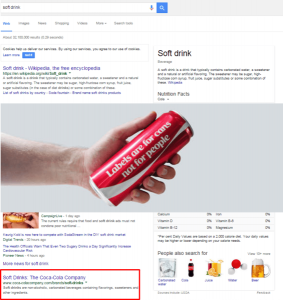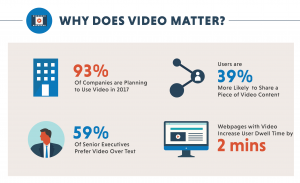Don’t let an overabundance of tech solutions and partners spoil the broth. Columnist Mike Sands cooks up six questions to ask yourself to ensure you’re in control of your customer data.

Customer data. It’s a brand’s special sauce. But right now, there are too many chefs in the kitchen.
Marketers are working with multiple technology solutions and partners. Their customer data is strewn among dozens of different platforms, channels, applications and silos.
Sure, the capabilities for each may be powerful in their own right. Yet when each piece of the marketing pie has its own recipe for customer data and identity, brands are left with fragmented slices of consumer behavior past and present, online and off. Which takes the ability to recognize and relate to customers at the right time and in the right context off the table — and that’s a recipe for disaster.
When the marketer’s experience is broken, so, too, is the customer experience. Hence, building and maintaining loyal relationships that inspire long-term value become a gamble, at best.
With odds like these, brands are increasingly taking back ownership of their customer data: More than one-third of marketers (registration required) are actively seeking alternatives outside of vendor-controlled identity solutions and closed media environments.
Marketers who want to take control of this valuable customer information are taking a new approach to their data. Multiple factors prevent brands from leveraging their first-party data to power better customer experiences, so they’re building their own unified data assets to get around those obstacles. Typically, this involves working with neutral solutions and open platforms that help them connect their offline and online data on a continual basis via custom ID graphs that the brand owns and controls.
Brands that develop their own data foundations can take advantage of durable identifiers to persist volatile data, such as cookie data, in order to deepen their customer knowledge over time. This paves the way for creating long-lasting, unified customer profiles that drive more meaningful and relevant interactions at every touch point.
If you don’t want to leave your brand’s fate in the hands of someone else, ask yourself these six questions:
1. Do you have the freedom to work with any partners you choose?
When a brand owns the keys to identity, it won’t miss key events in the consumer journey. Maintaining control at the identity layer gives marketers the flexibility to integrate with preferred partners, test new and emerging technologies and determine the best solutions without fear of losing any customer data.
With consumer profiles that are constantly updating, brands don’t have to relearn who a customer is each time. This allows marketers to freely activate their data with relevancy and speed using any partner or platform at critical moments throughout the buyer journey.
2. Are you getting all the data you need back from your partners?
Working with third parties, customer data may get trapped inside their vendor ecosystems. That means marketers can only understand a customer up until that point. When consumer connections are broken or missing, marketers don’t know how to relevantly speak to individuals at strategic stages in the customer life cycle — from acquisition to retention to occasions to upsell or cross-sell.
Only with complete access to user-level data can marketers close the loop on attribution, measure marketing performance and reduce ad waste. Knowing which investments are delivering the best results, brands can inform smarter marketing and media strategies to increase customer retention, loyalty and lifetime value.
3. Are you getting the most value out of your data?
A proprietary data asset can be used beyond marketing and across the enterprise to bring more value to the brand overall. It serves as the foundation for all consumer engagements across the web, mobile apps, stores, email, digital ads, contact centers and more.
A deeper understanding of customers allows marketers to recognize where they are in their buyer journeys and enhance their relationships by solving their problems, anticipating their needs or simply delighting.
4. Do you really know how your customer data is used?
Remember, these are your customers. They have entrusted your brand with personally identifiable information that’s yours — and yours alone — to own.
You categorically know who these people are, how they think and how they behave. Marketers must control who accesses these insights and ensure it’s done in a privacy-compliant way. Earning a customer’s trust is priceless in fostering long-term relationships. Breach it, and the buck stops with the brand. Literally.
5. Are you paying a toll for your data?
Some technology providers charge a brand to use its own data — in my book, that’s highway robbery. For instance, vendors may levy a fee each time a marketer uploads the same customer data, while cumbersome data processing methods can lead to missed opportunities for engagement and sacrifice retention.
By owning your data, you eliminate the data loss and high costs of working with multiple vendors.
6. Are you investing in a retention strategy?
If your brand is dependent on a third-party identity graph to recognize and reach your customers across devices and channels, are you really in control of your customer relationships? Probably not.
Customer identities and profiles are an invaluable enterprise-wide asset and vital to building strong relationships with your customers and sustaining a competitive edge. A brand-owned data and identity asset preserves all historical context and grows in value as new data is added throughout the lifetime of each customer relationship.
We all know customer data is a brand’s most important asset. So why let intermediaries stand in the way? When marketing systems work seamlessly together, so do consumer experiences. By keeping control of its data, a brand stays in control of its customers and, ultimately, its destiny.
Some opinions expressed in this article may be those of a guest author and not necessarily Marketing Land. Staff authors are listed here.
Marketing Land – Internet Marketing News, Strategies & Tips
(43)
Report Post







